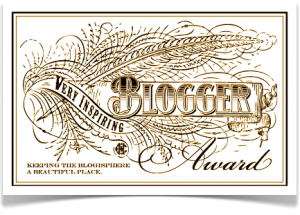
As a chronic worrier, ongoing anxiety warrior, and general wary-of-what’s-going-to-happen-next kind of person, I know how healing it can be to practice the art of living in the present. As simple as that goal seems, though, it sometimes proves a lot harder than it sounds.
I’ve read numerous articles and books on the subject, including Eckhart Tolle’s The Power of Now, which offers specific practices on how to connect to the outer world and, even more importantly, to the stillness of our inner being to help anchor ourselves in the present moment. As Tolle points out, people can cope with whatever arises in the here and now (even if it’s an emergency, one can spring into action), yet it’s practically impossible to deal with something that is only a mind projection into the future — or the wish-I-could-change-things way of thinking of the past. Living in the present, then, can help decrease the anxiety of future what-ifs and alleviate the depression of past regrets. And while I highly recommend Tolle’s teachings and often reread (and keep underlining) his book’s messages, I still struggle.
Looking around, I know others are as well. Even the people I know who practice living in the here and now and meditate on a daily basis suffer from the bows and arrows of both life circumstances and inner emotional pain. So… how can we deal the reality of hardship while striving to thrive in the now?
I believe, first of all, it’s important to know that both our physical and emotional worlds are things we need to acknowledge and tend to. In other words, if you’re dealing with incredible back pain, it may help to get it diagnosed by a health care practitioner and then heed whatever treatment plan that will heal or alleviate your physical distress. Likewise, if you’re in deep emotional pain, you may want to seek the expertise of a professional — or even a trusted friend — to help you understand where it stems from and what actions you can take to deal with it. Also, know that if you’re living with ongoing mental health conditions such as PTSD, depression, anxiety, panic disorder, and OCD, it’s important to acknowledge your triggers and know that it may be extra challenging to practice staying in the here and now (which doesn’t mean it won’t help you in the long run — even if you may encounter setbacks).
Then, too, most of us have to deal — at one time or another, at least — with devastating life circumstances such as natural disasters, death of a loved one, loss of job and/or home, etc. During these times, we can feel as if we’re treading on the sea of survival. We not only have to deal with the stark reality of today — but also have to plan for the future in a much bigger way than before. Practicing the present joy of the sun on our faces and connecting to the stillness of our inner voice can be that much more difficult — but even more powerful — during these trying times. As Tolle points out in his book Practicing the Power of Now, even if you learn to accept the reality of your current situation (whether it stems from devastation or simple stagnation), it doesn’t mean you have to resign yourself to it. You can still see what needs to be done, take action, and do one thing at a time to make a positive change toward a more positive direction.
The practice of living in the now, then, doesn’t mean that we deflect real life circumstances, emotions, mental health conditions and our physical bodies as mere distractions. We still take appropriate action; we still plan for the future. Taking action and planning in the present moment, though, is quite different from the rumination cycle of reliving past mistakes and fretting over future events. When we plant our feet in the reality of the here and now, we are more likely to stay clear headed, make positive, solution-based decisions — and hopefully be able to hold onto a deeper peace of mind — even while in turmoil. I, myself, am working on it, at least!
